Hapless Visitors
Maximilian Andreevich Poplavsky
Poplavsky is Berlioz’ uncle by marriage, living in Kiev. Bulgakov himself was born in Kiev. At the beginning of the book, in chapter 3, while Berlioz runs to the exit of the Patriarch’s Ponds to call the secret police, Woland calls out: «Would you like me to have a telegram sent at once to your uncle in Kiev?»
There exists a Russian phrase saying: «В огороде бузина, а в Киеве дядька» or «the elderberries are in the garden, and the uncle is in Kiev». It’s a reply given when there is no logical connection between the various things someone is saying, like in «you're mixing apples and oranges».
You can read more on Poplavsky in the section Characters of the «Master and Margarita» website by clicking the arrow below.
The former Institutsky Street
The «former» Institutsky Street is now Institutsky Street again. In 1919, the name was changed into October 25 Street and later, in 1944, into October Revolution Street. In 1993 it got its old name back. It is one of the main streets of Kiev, close to the Independence Square, better know as Maidan.
Have just been run over by tram-car
Bulgakov uses the impersonal form of the verb зарезать [zarezat] or cutting someone’s throat, the instrumentalis declension of the noun трамвай [tramway] or streetcar, and the accusative form of the personal pronoun я [ya] or I. This is a bizarre construction, in Russian as well as in English. The English language has no impersonal form, such as the French «on» or the Dutch «men». To get a similar effect, the third person plural «they» is often used. So the translation closest to the meaning of Bulgakov would be: «They just cut my throat with a tramway», as if one could use a tram-car as a knife to cut a throat.
For the students among you: зарезать [zarezat] also means to fail in the context of an exam.
An apartment in Moscow
If a Soviet citizen could obtain an apartment in Moscow it was a great victory. Moscow had goods that could not be found anywhere else. However, to gain a прописка [propiska] - a registration or permit to live there - one had to have been born in the city or marry someone with a permit. Poplavsky's attempts to trade his apartment in Kiev for one in Moscow and his desire to inherit his nephew's housing was a common scenario during the Soviet period.
You can read more on the housing policy in the Soviet Union in the Context section of the «Master and Margarita» website by clicking the arrow below.
The spring flooding of the Dnieper
The Dnieper River flows through Kiev.
The staggeringly beautiful view which opened out from the foot of the monument to Prince Vladimir
The statue of Prince Vladimir I of Kiev stands on a hill overlooking the Dnieper river below. Technically the statue is a monument to the baptism of Russia. Prince Vladimir Svyatoslavich the Great (956-1015) was the pagan ruler who, in 988, brought christianity in its Byzantine form to the Kievan Rus'. Kievan Rus' is considered a predecessor state of three modern East Slavic nations: Belarus, Russia and Ukraine. It stretched out from Kiev to Novgorod. Vladimir hoped for better political and cultural relation with Bulgaria and the Byzantine Empire.
The statue was made by Vasili Ivanovich Demut-Malinovsky (1779-1846) and Peter Klodt von Jürgensburg (1805-1867) and was erected in 1853.
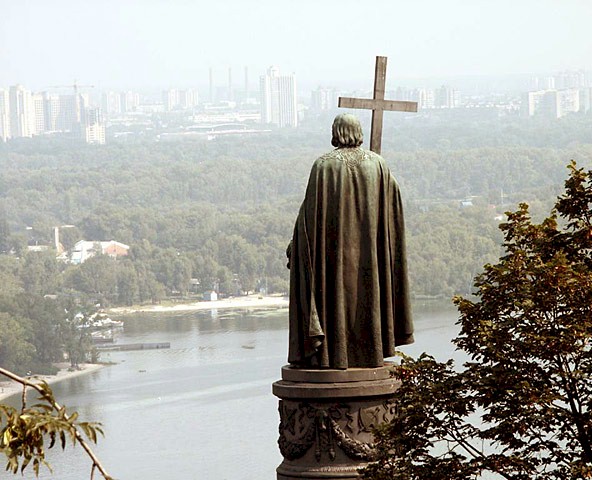
The monument to Prince Vladimir
«Aha!»
Poplavsky's several exclamations of «Aha!» show that he knows how to interpret the news that the chairman and the secretary of the management of Bolshaya Sadovaya no. 302 bis have vanished.
Management member Pyatnazhko
I don’t know (yet) if there exists a real prototype for the Pyatnazhko character. The first part of his name; пять [pyat], means five, and the verb нажить [nazhit] means earning [money].
As if on purpose, all of them at once...
In the Russian text, the men who vanish are put in the accusative, without any subject or verb. By this playing with the language, Bulgakov explains that they are the object of an action, executed by the «unmentionable» secret service. Poplavsky, clever man that he is, knows which subject and verb had been acting when, a few seconds later, «he found himself alone in the empty management room».
Three hundred drops of tincture of valerian
Again the drops that already appeared in the previous chapter. But 300 drops would be a huge dose, causing a coma or death.
The 412th office
Bulgakov uses again an impossibly high number for a department issuing passports. The number 412 will come back in chapter 27 of the novel,, when the secret police will find Grigory Danilovich Rimsky, the findirector of the Variety Theatre, in room number 412 of the Astoria hotel in Leningrad. Bulgakov knew this room very well, by the way. It's the room in which he preferred to stay himself when he was in Leningrad.
Believe it or not, but when your webmaster goes to Moscow, he often gets room number 412. Not at the Astoria hotel, though, but at the Baltschug Kempinski hotel.

Room 412
Passports
The internal passport was abolished after the revolution and reinstated by Stalin on October 27, 1932, in the period of the Great Famine. However, the rural population did not get one, because the regime wanted to avoid that everybody left the kolchozes or collective farms. Without a passport it was impossible to move to another city. Peasants had to wait until the 60s before they could have a passport.
The application process to get a passport was quite complex with many long questionnaires, containing a series of unpleasant and dangerous questions about the past, about relatives abroad, etc.
Actually, this hasn't changed much since then. In 2009, when the webmaster of the Master & Margarita website was applying for a residence permit in Moscow, he also had to fill out many long questionnaires in which he had to mention a lot of information, not only about himself, but also about his parents, all his brothers and sisters and their activities, all the addresses he ever lived etc. Before he could actually start the procedure, he was sent to four different hospitals in four different parts of the city for a whole series of medical examinations, of which the last one was in a psychiatric center. At that time, he had a blog in which he described his experiences throughout the application procedure. Soon after he started describing the often rude and humiliating treatment of the applicants, of which most came from former Soviet republics, and details on how bribes had been requested and paid, the blog was taken offline by unknown forces. The residence permit was granted, though.
Everything was confusion in the Oblonskys' home
Bulgakov quotes the second line of the novel Anna Karenina (1873-1876), the famous novel written by Lev Nikolaevich Tolstoy (1828-1910).
An old-fashioned tussore silk suit
Bulgakov describes an elderly man в чесунчовом старинном костюме [v chessunchovom starinnom kostumye] or in an old-fashioned tussore silk suit. Чесуча [chesucha] is tussore silk. It’s a brownish kind of wild silk, produced by the caterpillar of the tussah butterfly, which is found in China.
The Dutch translators don’t talk about tussore silk, they mention shantung silk. Shangtung is the name given to a rough silk tissue produced in the province of 山东 [Shan-tung] or Shandong. Shandong is considered as the province where pottery-making, porcelain and silk originated. Are the Dutch translators mistaken than? Well, not quite. The tissues which are made from tussore silk are honan and shantung.
Andrei Fokich Sokov
Sokov is the barman at the Variety Theatre. It’s an appropriate name for a barman, because the Russian word сок [sok] means juice.
You can read more on Sokov in the section Characters of the «Master and Margarita» website by clicking the arrow below.
The purple scar on her neck
With this characteristic - «the only thing that might have been considered a defect in her appearance» - Bulgakov indicates that the girl who let Sokov in was a vampire. Vampires occur in many legends around the world. In most cases, they are revenants of evil beings, suicide victims, or witches, but they can also be created by being bitten - often in the neck - by another vampire.
A funereal cloak lined with fiery cloth and a long sword with a gleaming gold hilt
These are costumes and props appropriate to the devil Mephistopheles in the opera Faust by Charles Gounod (1818-1895).
Baron Meigel
The real prototype for Baron Meigel's character is Baron Boris Sergeevich (von) Steiger (1892-1937). In the '20's and '30's he worked in Moscow at the Народный комиссариат просвещения (Наркомпрос) [Narodny kommisariat prosveshcheniya] (Narkompros) or People's Commissariat for Enlightening, where he was responsible for External Relations. Simultaneously he worked as an agent of the Объединённое государственное политическое управление (ОГПУ) [Obedinyonnoe gosudarstvennoe politicheskoye upravlenye] (OGPU) or the United State Political Administration, the secret service which became part of the notorious NKVD in 1934. In 1937, Steiger was arrested and executed.
Steiger is mentioned several times in the diary of Elena Sergeevna Shilovskaya (1893-1970). He was often found at the embassy of the United States. He reported on foreigners connected with the theatre, and on Soviet citizens having contact with the embassy.
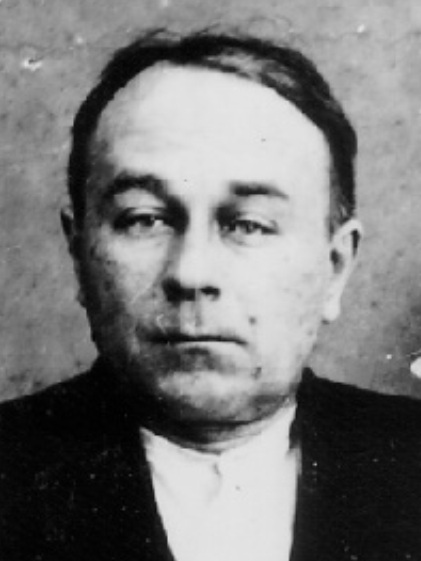
Boris Sergeevich (von) Steiger
Meigel reappears in the novel in chapter 23, at the Great Ball of Satan. In the Characters section of the Master & Margarita website, you can read more on Boris Sergeevich Steiger by clicking the arrow below.
A tailcoat or a black suit
On March 29, 1935, Bulgakov and his wife received an invitation to a reception which would be organised at the American ambassador's residence on April 23. The invitation had a note added: «A tailcoat or a black suit». In her diary, Elena Sergeevna Shilovskaya (1893-1970) wrote, «Misha was worried that the note was meant for him only. And I tried very hard to 'create' a tailcoat quickly. But the tailor couldn't find the right fabric and he had to go in a suit».
This reception of April 23 inspired Bulgakov to describe the Great Ball of Satan in chapter 23. At the end of this reception, Bulgakov and his wife met the aforementioned Steiger for the first time: «We left at half past five in one of the cars of the embassy. With us in the car was a man we didn't know, but whom all Moscow knows. It seems his name is Steiger. He was sitting next to the driver and we were in the rear».
A black tailcoat and patent leather shoes are also part of the dress code for lodge brothers in Freemasonry. Later in the novel, at the Great Ball of Satan, all male guests will be dressed this way.
The interest of Bulgakov for Freemasonry can be explained by the fact that, in 1903, Afanasy Ivanovich Bulgakov (1859-1907), theologian and church historian, and the father of Mikhail Afanasievich, had written an article about Modern Freemasonry in its Relationship with the Church and the State, which was published in the Acts of the Theological Academy of Kiev. Bulgakov refers more than once to Freemasonry in the novel.
You can read more on Freemasonry in The Master and Margarita in the Context section of the «Master & Margarita» website by clicking the arrow below.
The stained glass of the big windows, the table covered with church brocade
Various houses in Moscow at the turn of the century had stained glass windows, though not the one Bulgakov actually lived in. The church-like atmosphere prepares the reader for the ball that takes place in chapter 23.
In 1926, two years before Bulgakov started writing The Master and Margarita, several Masons got arrested in the Soviet Union, mostly in Leningrad, where six Lodges were found to exist. One of those arrested, the lawyer Boris Viktorovich Kirichenko (1883-1941?), who lived under the pseudonym Boris Viktorovich Astromov. In the documents of the secret police, the following description can be read: «The interior of the Masonic Lodge would be an asset to any given museum. We saw old portraits of the great Freemasons who belong in the ranks of the devotees of the genius. We saw secret 300 years old lamps, astral knots, the true rings of Cagliostro, Indian resins and Japanese incense, the bones keys of the Jesuits, Tangar sculptures, tapestries embroidered in blue gold, and even the original oath of allegiance to the Maltese knights, signed by Paul I.»
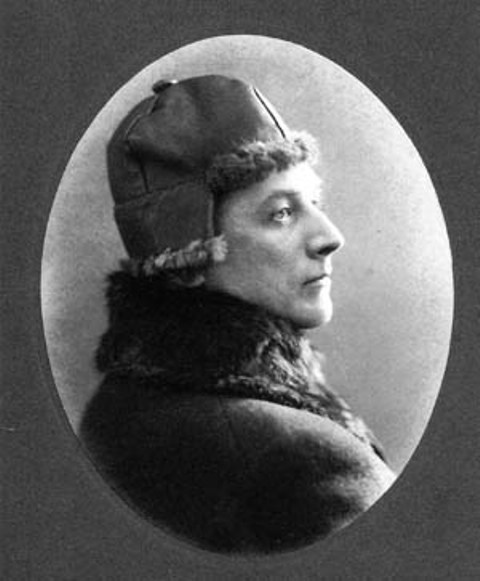
Boris Viktorovich Astromov
In an earlier version of The Master and Margarita, similar items filled the apartment on Sadovaya: lots of rugs, a golden chalice on a pedestal for the holy gifts, the Catholic black cassock of Woland, made of gold brocade with inverted crosses, and a cat with turquoise eyes sitting on a couch. And when Sokov, the buffet chief of the Variety Theatre, was leaving the apartment, he saw a temple where, instead of an icon, «a picture with the sacred content» was placed.
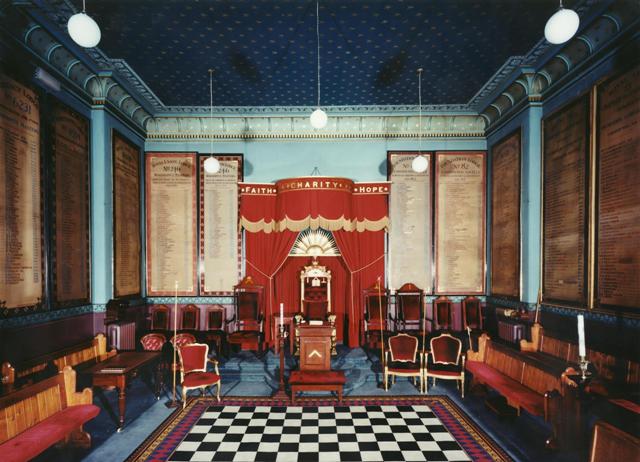
Typical interior of a lodge
A church panikhida
A панихида [panikhida] is a special service of the Orthodox Church for commemoration of the dead, held between the actual death and the burial. A panikhida may be celebrated at any other convenient time as well, like on the sixth month anniversary of death or the annual anniversary of death. Many Orthodox Christians offer a panikhida every year on the anniversary of a beloved one’s death, celebrating in a certain sense their birthday into life eternal.
Brynza Feta cheese is never green in colour!
In the Russian text is written: «Брынза не бывает зеленого цвета!» or «Brynza has no green colour!». Bulgakov doesn’t use the word feta. Брынза [Brynza] is a goat’s or sheep milk cheese made mainly in Slovakia, Romania and Moldova, but also in Poland, Ukraine, Hungary and part of Moravia. This cheese is creamy, rich and salty, and ranges from soft and spreadable to semidry and crumbly.
They supplied sturgeon of the second freshness
Sturgeon of the second freshness or, in Russian: Осетрину прислали второй свежести [Osetrinu prislali vtoroy svezhesti] became one of the many popular sayings from Bulgakov's The Master and Margarita after its first publication. It was common in the Soviet Union to classify things into grades, in such way that the lesser categories could be given a positive name anyway.
In the 19th century there existed already expressions like «partially fresh eggs». In 1895, George du Maurier (1834-1896) had published a cartoon in the British humorous magazine Punch with the title True Humility. A timid-looking curate is taking breakfast in his bishop's house, but the egg he got isn’t really fresh. The Bishop says: «I'm afraid you've got a bad egg, Mister Jones». Apparently trying to avoid offence the curate replies: «Oh, no, my Lord, I assure you that parts of it are excellent!»

George du Maurier - True Humility
A cup of wine?
The interrogation of Sokov in the apartment of Woland also reminds us of the test undergone by a Freemason before he is being initiated as a Knight Kadosh or Knight of the White and Black Eagle, the 30th degree in the Ancient and Accepted Scottish Rite. All candidates for this degree are, among other things, judged on their attitude towards the Seven deadly sins: hubristic pride, greed, lust, malicious envy, gluttony, wrath, and sloth. Sokov, however, does not drink wine and does not seem to be interested in women. He does show signs of greed, though, and he became angry when Woland asked him if he was going to die. He thus failed the test and would not see the light.
The binomial theorem, you might think!
The expression бином Ньютона! [binom Newtona!] or Newton’s binomial theorem! became also very popular in Russian after the first publication of the novel. From what follows in the text, one can see that anything is easier than Newton’s binomial theorem, even the prediction of someone’s death.
Newton’s binomial theorem is a rather complex mathematical formula developed by Isaac Newton (1643-1727) giving the expansion of powers of sums. It specifies the expansion of a binomial of the form (x + y) to the exponent n as the sum of n + 1 terms of which the general term consists of a product of x and y with x raised to the exponent (n - k) and y raised to the exponent k and a coefficient consisting of n! divided by (n - k)!k! where k takes on values from 0 to n. If you were able to understand this explanation, you're a whole lot smarter than I am.
Hella
Hella is a female vampire. From his annotations we know that Bulgakov found her name in the Энциклопедический словарь Брокгауза и Ефрона [Entsiklopedesky slovar Brokhauza i Efrona] or the Brockhaus and Efron Encyclopedic Dictionary, a work containing 86 volumes, which can be considered as the Russian equivalent for the Encyclopaedia Brittanica. Under the keyword Чародейство [Charodeystvo] or magic or witchcraft, he found that Empuza, Lamia and Hella were the names given on the Greek island of Lesbos to premature girls who became vampires after their death.
In the earlier versions of The Master and Margarita, however, this рыжая голая [ryzhaya golaya] or red naked had a different name. She was called Marta.
The Russian psychologist and translator Valery Konstantinovich Mershavka (°1957) believes that this Marta was inspired by Sofia Lvovna Perovskaya (1853-1881). Perovskaya was a prominent member of the socialist revolutionary organisation Народная воля [Narodnaya Volya] or The Will of the People, and she participated in three attempts to murder Tsar Alexander II (1818-1881). The last attempt was successful, after which Perovskaya was sentenced to death by hanging. This way of executing could explain the багровый шрам [bagrovy shram] or the red scar in Marta's - and later Hella's - neck.
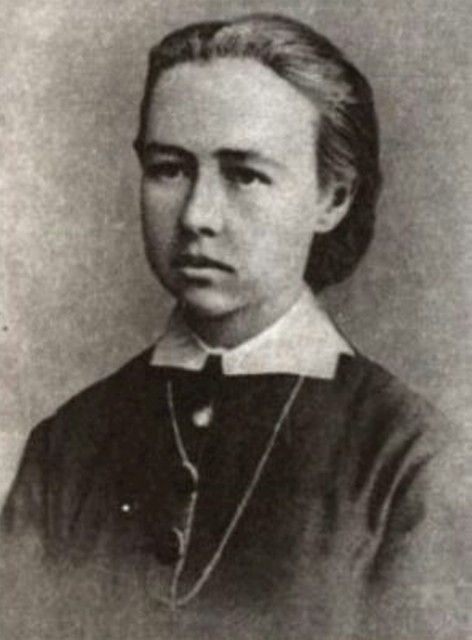
Sofia Lvovna Perovskaya
In the Characters section of the Master & Margarita website, you can read more on Hella by clicking the arrow below.
A velvet beret with a dishevelled cock's feather
When the buffet master is leaving the apartment, he notices that he is wearing a velvet beret with a dishevelled cock's feather. That is significantly inferior to the «broad-brimmed black felt hat with a plume of ostrich feathers on the left» which, according to the rules, the Knights of Kadosh should wear during the masonic rituals.
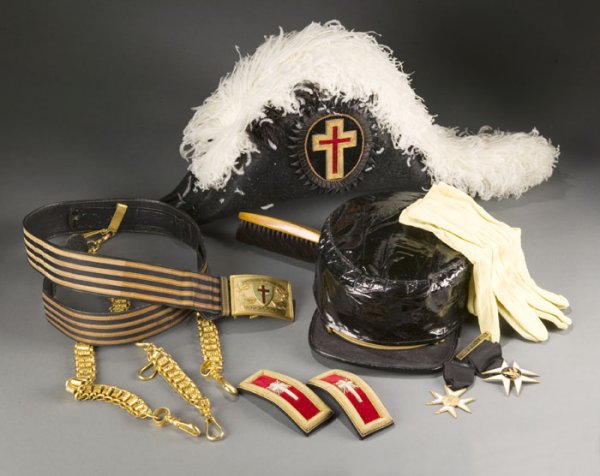
Black hat with a plume of ostrich feathers
The beret turned into a black kitten
For this detail Bulgakov was inspired by the novel Московский чудак [Moskovsky Chudak] or The Moscow Eccentric by the Russian writer Boris Nikolaevich Bugaev (1880-1934), who wrote under the pseudonym Andrei Bely.
In The Moscow Eccentric, the self-willed professor Korobkin puts a cat on his head instead of his fur beret. The prototype of professor Korobkin's character was Bely's own father, Nikolai Vasilyevich Bugaev (1837-1903), who was a prominent Russian mathematician. Nikolai Bugaev was a memorable character with a life full of scandals. He was not, it is said, much admired for his looks, but his wife was brilliant, beautiful, and rich, and the Bugaevs were socially prominent.
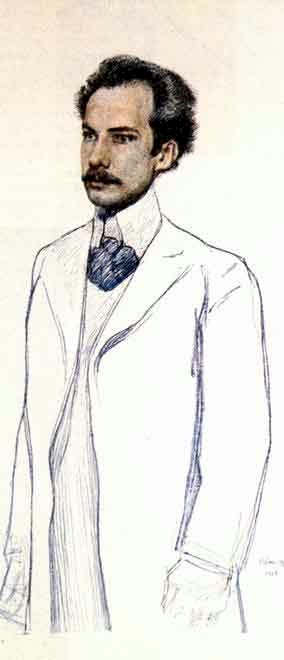
Andrei Bely
Professor Kuzmin
Bulgakov took the name Kuzmin from Vasily Ivanovich Kuzmin (1851-1928), a Russian surgeon and professor at the universities of Moscow and Kazan who, at the end of his career, had opened a private practice in Sadovaya Kudrinskaya no. 29, near the Patriarch's pond. Many sources see him as the real prototype for the professor in The Master and Margarita, and introduce him as «one of the doctors who unsuccessfully treated Bulgakov at the end of 1939». But that is impossible, because Vasily Ivanovich Kuzmin died more than 10 years before.
The real life prototype for the Professor Kuzmin in the novel was Professor Miron Semyonovich Vovsi (1897-1960), a specialist in kidney and lung diseases. Vovsi had got his doctor's degree in 1919 at the Medical Faculty of theMoscow State University. He was known for not always paying attention to medical ethics, especially in expressing his diagnosis. After he had examined Bulgakov on September 17, 1939, he immediately told Elena Sergeevna that Bulgakov would die within three days. Bulgakov would die only seven months later, but he couldn't stop thinking of the meeting with Vovsi, and on January 15, 1940, he dictated the scene of the buffet master of the Variety Theatre and his meeting with Professor Kuzmin to his wife Elena Sergeevna.
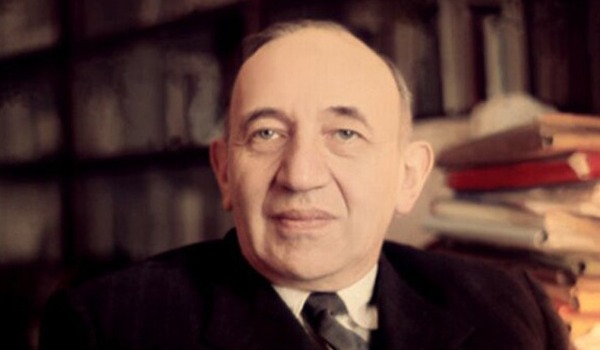
Miron Semyonovich Vovsi
In the Characters section of the Master & Margarita website, you can read more on Kuzmin by clicking the arrow below.
A small white house
The drugstore mentioned in The Master and Margarita belonged to a certain Rubanovski and was situated in Bolshaya Sadovaya ulitsa no. 1. The house in which Bulgakov situates the cabinet of doctor Kuzmin was a little further, in no. 5, which is where Elena Sergeevna Shilovskaya (1893-1970), Bulgakov's third wife, lived. Both buildings were torn down when the Hotel Pekin, one of Moscow's biggest hotels, was built. The real doctor Kuzmin lived in Kudrinskaya ulitsa no. 28.
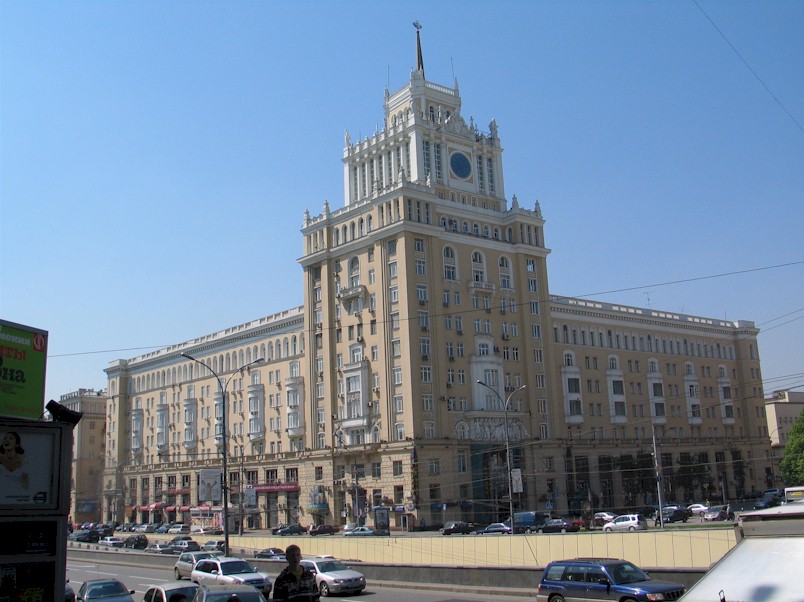
Hotel Pekin
Professor Bouret
I don’t know (yet) if there exists a real prototype for the professor Bouret character. In Michael Glenny's translation he's called Burye.
three labels from bottles of Abrau-Durso wine
Abrau-Durso is a city in the Novorossiysk region in Russia where, since 1870, champagne and wines are produced. The vineyards are situated on the coast of the Black Sea.
It was prince Lev Sergeevich Golitsyn (1845-1916) who brought to Russia the recipe of champagne discovered 200 years earlier by the monk Dom Pierre Pérignon (1638-1715). Golitsyn started the production of it in Abrau Durso.
On July 2, 2021, the Russian President Vladimir Vladimirovich Putin (°1952) hijacked rather shamelessly the name champagne with a strange law. Despite international patent protection, only wines produced in Russia may bear the name шампанское (shampanskoye] or champagne. Wines of foreign origin, including the genuine French champagne, may only be labeled игристое вино [gristoye vino] or sparkling wine.
The French translator Claude Ligny seemed very far-sighted in this regard. He translated Bulgakov's words три этикетки с бутылок «Абрау-Дюрсо» [tri etiketi s butilok «Abrau-Durso»] or three labels from bottles of Abrau-Durso wine as trois étiquettes de bouteilles de champagne or three lables from bottles of champagne. The same remark also applies to the English translator Michael Glenny with three old champagne bottle labels instead and the Dutch translator Marko Fondse with drie champagne-etiketten van het merk «Abrau-Durso» or three labels from the champagne brand «Abrau-Durso».
«Hallelujah!»
This is the second appearance of this song in the novel. This charleston written by Vincent Youmans (1898-1946) appears three times in the novel.
Here you can listen to Ella Fitzgerald's version of Hallelujah.
You can read more about the song, or watch the Griboedov jazz band playing it in the Themes chapter of the Master & Margarita websiteby clicking the arrow below.
Working it in syncopation
The word syncopation comes from the Greek verb συγκόπτω [synkopto], which means to abbreviate. In music, the term is used for a disturbance or interruption of the regular flow of rhythm or the placement of rhythmic stresses or accents where they wouldn't normally occur.
(I'm not joking!)
This is one of the few times that the narrator comments directly what's happening in The Master and Margarita. As if the reader, who swallowed decapitations, mass hypnoses and much more demonic things, would now, all of the sudden, not believe that a sparrow «shat in the presentation inkstand».
He called a leech bureau
The medicinal leech Hirudo medicinalis and its congeners Hirudo verbana, Hirudo troctina and Hirudo orientalis was used as a means of bloodletting. The leech was put on the skin and it sucked blood from the patient. Then the blood was pushed out of the leech to avoid it to become saturated. A diagnosis was made based on an analysis of the blood. In previous times, leeches could be freely bought in pharmacies. In some big American states and in Asia they are still used, albeit much less than in Bulgakov's time. Between 1829 and 1836, for example, 6 million leeches were used annually in hospitals in Paris, drawing nearly 85.000 kg of blood from patients each year.
Ironically, modern medicine again has a use for medicinal leeches. They produce a substance, the so-called hirudine, which is an effective means to reduce blood coagulation, to relieve pressure from pooling blood, especially after plastic surgery, and to stimulate circulation in reattachment operations for organs with critical blood flow, such as eye lids, fingers, and ears.

